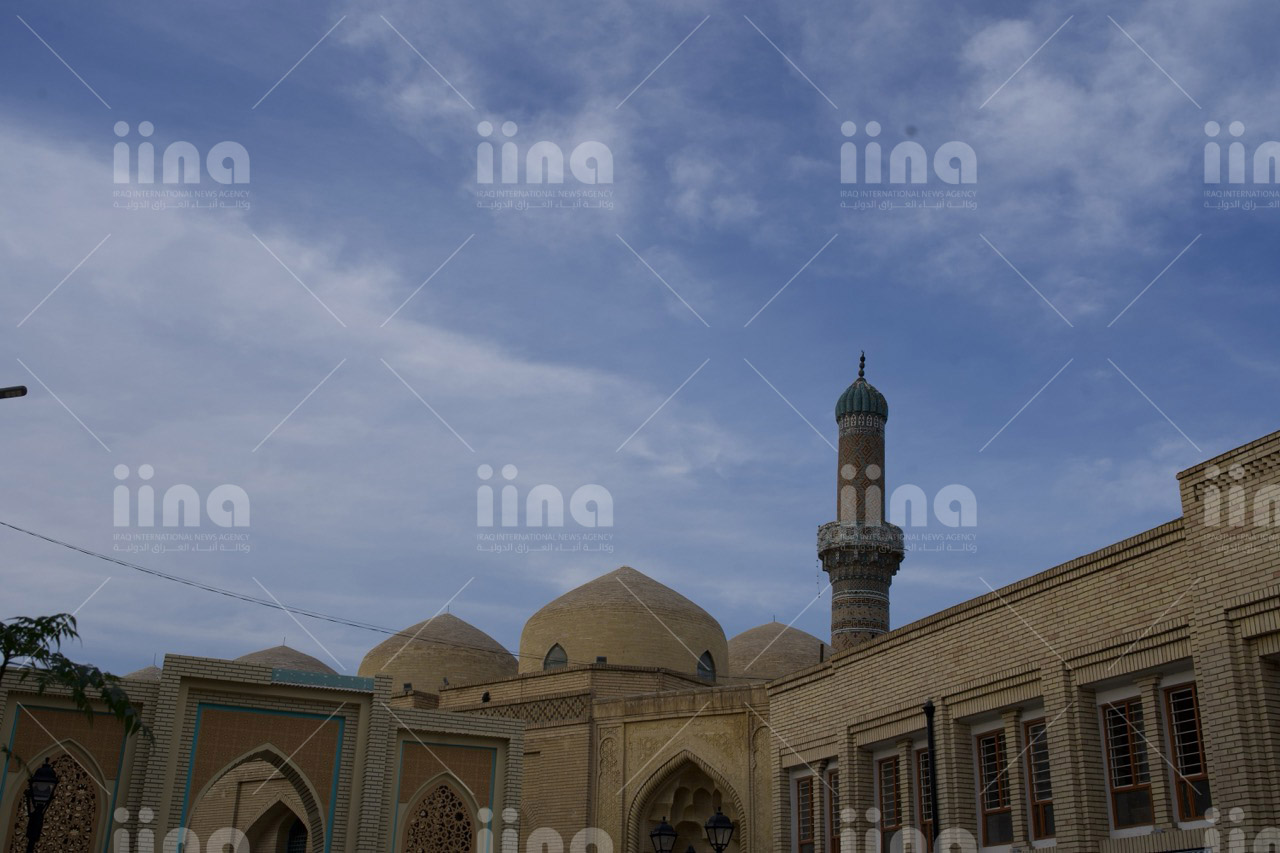Minarets have been a powerful symbol throughout Iraq for generations.
They hold special significance culturally, religiously and historically. These towers are much more than an architectural feat, but rather a symbol of Iraq’s rich cultural and religious heritage.
Baghdad alone is home to over 1,000 mosques, and each mosque has from one to six minarets. The iconic minarets reflect the city’s rich cultural history and Islamic heritage. The tradition of building minarets dates back to the Abbasid Caliphate period, during this time minarets were built alongside mosques as a way to distinguish between other buildings. However, they also played a functional role. Minarets provided a high vantage point, from which the call to prayer could be heard across the surrounding area.
Featured in the photographs is the beautiful Al-Wazeer mosque, located near Al-Mutanabbi street. It was originally built by the wazir of Baghdad, Hassan Pasha, in 1599 and was named after him. The mosque was rebuilt after being damaged by floods in 1831. The mosque has one minaret, featuring traditional Ottoman architecture. The minaret is the oldest preserved part of the mosque and still in its original form. The mosque also features a dome covered in glazed tiles and marble, and a courtyard extending 1,000 square metres, decorated in writing and motifs.

Beyond their architectural function, minarets hold immense cultural and religious significance. Their primary role, of course, is to serve as the location from which the call to prayer, adhaan, is announced. With five daily prayers spaced out throughout the day, the sound of the adhaan marks the rhythm of daily life. Therefore the minaret has long been a symbol of religious connection standing tall to call all who can hear it to pause and pray.

Some of the famous minarets of Baghdad include Suq al-Ghazel, which is built on the site of the original Al-Khulafa mosque. One of the oldest remaining mosques in Baghdad, it was built by Abbasid caliphs. The minaret is distinguished by its unique spiral design and geometric decorations. It is also the only minaret in Iraq with a twelve-sided base.
Minarets throughout Iraq come in various shapes and sizes, but they all serve to highlight the significance of mosques as a place of worship. Their towering height symbolises the presence of Islam in the region, and the power of the Muslim rulers who constructed them. They were a mark of religious and political authority.
The Haydar-Khana Mosque features one minaret and it is one of the famous ottoman minarets in Baghdad. It is widely regarded as one of the most beautiful mosques in Baghdad. It is famous for its geometric decorations and engravings that reflect the beauty of Ottoman architecture.

These minarets not only mark religious and historical sites but also stand as enduring symbols of Baghdad’s resilience and cultural continuity.
- Published: 2nd December, 2024
- Location: Baghdad
- Country: Iraq
- Editor: Amel Saleh
- Photographer: Noor Mohammed Mohsen
- Category: Heritage





